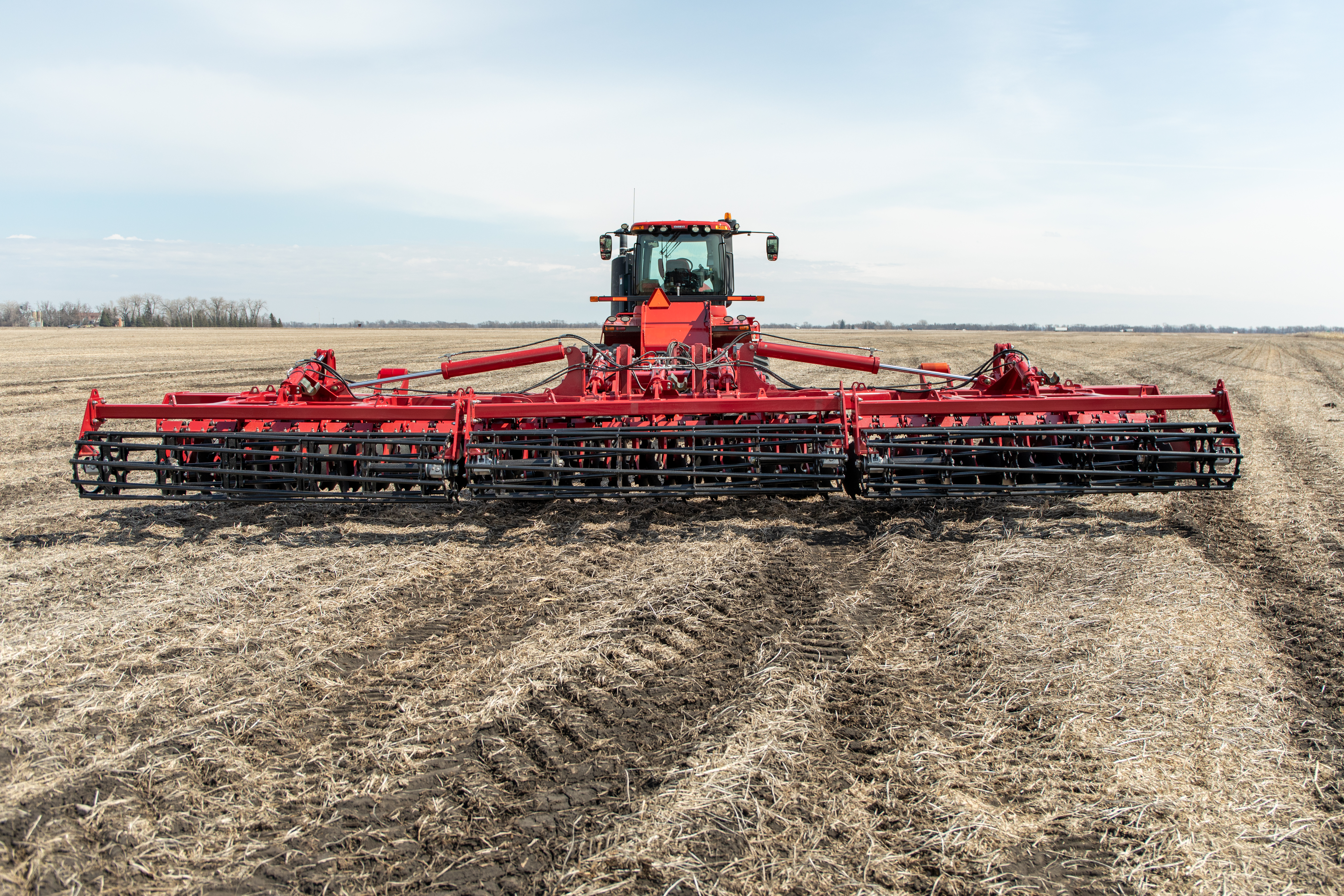
By: Grace Lange
The concept behind conventional tillage is simple: by incorporating crop residue into the soil and breaking up areas of compaction, we make it easier to seed the next crop, increase water and nutrient filtration through the soil profile, and promote healthier crop root growth. Today, there are more types of primary tillage tools available to growers, adding more choices to how farmers manage their residue and compaction. Titan Machinery offers a full line of Case IH primary tillage equipment, along with other "shortline" manufacturers such as Salford, Kwik-till, Tatu and others that together offer our customers a variety of choices that meet the needs of every field condition. We employ a staff of Equipment Sales Consultants and others that have the experience and training to help you match the right primary tillage tool to your field and crop conditions to maximize your bottom-line. Titan Machinery Intern and Ag Systems Technology student at Iowa State, James Hadacek, has seen the effects each type of tillage tool can have on crop potential. "There is quite a variety of options for producers to consider when making a decision to buy a piece of tillage equipment. Making that decision comes down to understanding the soil types, crop rotations, and how the producer wants to manage residue and compaction." In this article we will explore the options available and which tillage tool may be right for your operation.
History of Tillage
Through the years, tillage has undergone many changes. One hundred years ago, tillage typically started with a pass with a plow which turned the soil over, followed by a pass with a light disk or harrow to prepare a seed bed for the seed to be placed. Over time, larger tillage implements pulled by higher and higher HP tractors became the norm. In the 1960's, studies showed hat compaction was a major factor in limiting the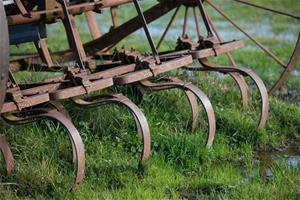 yield potential for many crops. The introduction of larger equipment, bigger fields, and higher yields increased awareness of both the positive and negative effects of different tillage practices on a producer's bottom-line.In response to evidence that traditional plows and heavy disks were creating a hard-pan layer of compaction which was limiting yields for many farmers, in-line rippers and disc-rippers were developed and introduced to the market. Rippers effectively addressed the issues of hard-pan in fields and, in the case of the disc-ripper, effectively incorporated residue in the same pass. More recently, high speed discs have become a widely used tool to size crop residue, incorporate it into the soil profile, and leave an optimal seed bed.
yield potential for many crops. The introduction of larger equipment, bigger fields, and higher yields increased awareness of both the positive and negative effects of different tillage practices on a producer's bottom-line.In response to evidence that traditional plows and heavy disks were creating a hard-pan layer of compaction which was limiting yields for many farmers, in-line rippers and disc-rippers were developed and introduced to the market. Rippers effectively addressed the issues of hard-pan in fields and, in the case of the disc-ripper, effectively incorporated residue in the same pass. More recently, high speed discs have become a widely used tool to size crop residue, incorporate it into the soil profile, and leave an optimal seed bed.
The agriculture industry is constantly experimenting with new tillage technology. As operations grow and technology evolves, farmers are now asking themselves how they can manage the residue, compaction levels, and which tools and solutions are the best for their operation.
Equipment Options
High Speed Discs – Case IH Speed Tiller, Norwood Kwik-Till, Salford Vertical Tillage, Tatu High Speed Disc
The newest category of equipment on the tillage market is the high-speed disc. Titan Machinery offers a variety of makes, models and configurations ranging from the Case IH Speed Tiller to the Norwood Kwik-Till, Salford Vertical Tillage models, and the Tatu High Speed Disc. High speed discs have grown in popularity due to their ability to cover 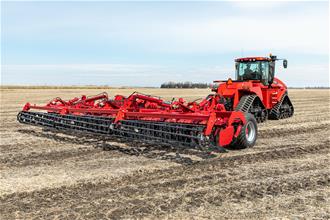 a lot of ground when pulled with a large enough tractor. All feature a rugged frame, with independently mounted blades. This attachment has the versatility to be used both in the fall for the primary tillage pass, and in the spring for final seedbed prep. Rated at working speeds of up to 12-14 mph, they can quickly cover a lot of ground, slicing residue, mixing it into the top layer of soil, and leveling the field.
a lot of ground when pulled with a large enough tractor. All feature a rugged frame, with independently mounted blades. This attachment has the versatility to be used both in the fall for the primary tillage pass, and in the spring for final seedbed prep. Rated at working speeds of up to 12-14 mph, they can quickly cover a lot of ground, slicing residue, mixing it into the top layer of soil, and leveling the field.
High speed discs require less horsepower than a conventional disc-ripper and can cover a lot more ground in a day. If compaction is a concern however, a high speed disc alone is not going to provide the answer. Heavy equipment like grain carts, combines, or trucks and some tillage practices can create a hard pan 14"-18" below the surface of the soil limiting water infiltration and impeding root growth. Depending upon the type of soil, this can severely cut into yields. Breaking up hard pan compaction layers requires a ripper or disc-ripper to shatter the compaction zone and break-up the hard pan. A second pass before planting with a high speed disc to further size material, fluff and blacken the soil and level the surface is recommended. For farmers who are accustomed to traditional tillage tools that operate at 4-6 miles per hour, a operating a high speed disc at twice that speed is something that has to be seen to be believed. See your local Titan Machinery to talk about setting up a high speed disc demo on your farm so you can see for yourself how well it sizes heavy residue and mixes it with the soil.
Disc Rippers – Case IH Ecolo-Tiger 875
The most popular primary tillage tool in the corn belt for the last 20+ years has been the disc ripper. The disc ripper is extremely effective at addressing compaction and does an adequate job of sizing material. It's most useful in situations where the combination of today's large equipment and soil conditions create a hard pan compaction layer deep in the soil profile. Once this hard pan is created, roots have an extremely difficult time penetrating the compaction level, potentially having a dramatic impact on your yield. The Ecolo-Tiger 875 Disc Ripper by Case IH is an outstanding unit to address these issues. This machine fractures the compacted soil and lifts it to the top, all while incorporating residue and breaking up soil clods. It also comes with the option of rolling baskets and/or harrows to help level the field and prepare it for the secondary tillage pass in the spring.
The trade-offs with a disc ripper are that they take a lot of horsepower and fuel to operate, they are somewhat limited on the amount of sizing and mixing of the crop residue with the soil, and speeds are limited to about 6mph depending upon horsepower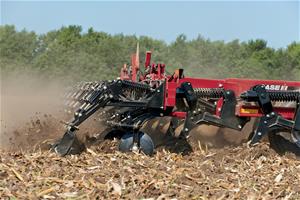 and soil conditions. However, they are the most effective primary tillage tool for breaking up compaction when set correctly. If they are not set correctly producers run the risk of not reaching the bottom of the compaction layer, pushing the bottom half even farther down with the weight of the machine. To see how to properly set your machine visit: Setting Disc Ripper
and soil conditions. However, they are the most effective primary tillage tool for breaking up compaction when set correctly. If they are not set correctly producers run the risk of not reaching the bottom of the compaction layer, pushing the bottom half even farther down with the weight of the machine. To see how to properly set your machine visit: Setting Disc Ripper
Vertical Tillage Tool – True-Tandem 335 Barracuda
Lastly, the Case IH tillage line includes the True-Tandem 335 Barracuda. This machine utilizes twin gangs of gang-mounted blade to lift the soil vertically, while sizing the residue and mixing it with the soil. "This is a versatile tool when it comes to soil management in areas that don’t experience a lot of compaction issues but need residue management," states Hadacek. Rolling baskets and harrows are available options, making it a very versatile tool that can be used for both primary tillage in the fall and secondary seedbed prep in the spring. To learn more about this attachment visit: Case IH Vertical Tillage Tool
As with most tillage tools, the Case IH Barracuda performs optimally when set at the correct depth. To learn how to properly set your machine visit: Setting Vertical Tillage
Which Tillage Attachment is the Best for Your Operation?
Titan Machinery carries a variety of tillage tools from Case IH and other manufacturers that have produced proven results across many soil conditions and cropping practices. Different conditions will warrant different tillage practices, and some may require multiple passes with different tools to get the desired outcome. In general, if soil compaction is a major concern due to wide-spread heavy clay soils and heavy field traffic, a disc ripper is probably going to be required in order to shatter the hard pan and open up the soil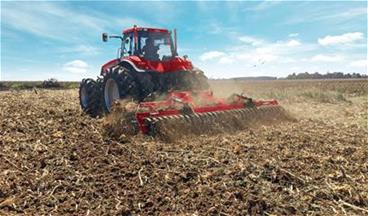 profile. Soil conditions in other parts of the Midwest might only require limited ripping to break-up compaction in high traffic areas in the field such as headlands. Farmers who are not facing compaction issues can instead focus on the optimal tillage tool for managing residue and blackening and leveling the soil in preparation for seeding. Producers need to identify the type of soil their field is comprised of and work with their local Equipment Sales Consultant to select their machinery accordingly.
profile. Soil conditions in other parts of the Midwest might only require limited ripping to break-up compaction in high traffic areas in the field such as headlands. Farmers who are not facing compaction issues can instead focus on the optimal tillage tool for managing residue and blackening and leveling the soil in preparation for seeding. Producers need to identify the type of soil their field is comprised of and work with their local Equipment Sales Consultant to select their machinery accordingly.
A high speed disc may be the best versatile tillage attachment on the market, because it can be used for any soil and both primary tillage in the fall and seedbed prep in the spring. When it comes to managing residue, high speed discs are very effective at sizing material and incorporating it into the top layer of soil, allowing natural micro-organisms begin the process of breaking it down. The additional speed and lower HP requirements are added benefits of this type of tillage implement.
Ultimately, the best tillage solution for your operation will depend upon a number of variables which will vary from operation to operation. Hadacek suggests:
"Modern producers have to be efficient and productive, and be willing to adapt to new conditions. Pushing yields to new highs with the help of technology and genetics creates more residue and increases the importance of residue management through tillage and other practices. New advances in the tillage field gives growers more options in how to approach residue and compaction issues. Many farmers are using the approach of minimum tillage but maximum incorporation of residue in order to reduce operating costs and cut down on erosion and soil degradation. The right tools are available. Soil type and application as well as producer goals are the deciding factors."
Contact your local Titan Machinery to get expert advice on the right equipment for your operation.